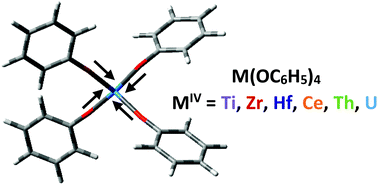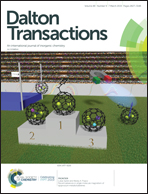Computational analysis of M–O covalency in M(OC6H5)4 (M = Ti, Zr, Hf, Ce, Th, U)†
Abstract
A series of compounds M(OC6H5)4 (M = Ti, Zr, Hf, Ce, Th, U) is studied with hybrid density functional theory, to assess M–O bond covalency. The series allows for the comparison of d and f element compounds that are structurally similar. Two well-established analysis methods are employed: Natural Bond Orbital and the Quantum Theory of Atoms in Molecules. A consistent pattern emerges; the U–O bond is the most covalent, followed by Ce–O and Th–O, with those involving the heavier transition metals the least so. The covalency of the Ti–O bond differs relative to Ce–O and Th–O, with the orbital-based method showing greater relative covalency for Ti than the electron density-based methods. The deformation energy of r(M–O) correlates with the d orbital contribution from the metal to the M–O bond, while no such correlation is found for the f orbital component. f orbital involvement in M–O bonding is an important component of covalency, facilitating orbital overlap and allowing for greater expansion of the electrons, thus lowering their kinetic energy.

- This article is part of the themed collection: Challenges in organometallic & coordination chemistry: in celebration of Geoff Cloke’s 65th birthday


 Please wait while we load your content...
Please wait while we load your content...